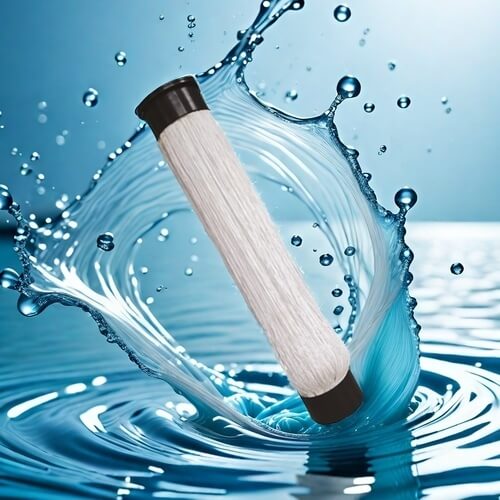Coal mine wastewater treatment methods
The treatment of coal mine wastewater is an important link in ensuring environmental safety and sustainable resource utilization. With the continuous deepening of coal mining, the problem of wastewater discharge is becoming increasingly serious, directly affecting the quality of water resources and the ecological environment. This article will explore in detail six methods for treating coal mine wastewater, including physical treatment, chemical treatment, biological treatment, membrane technology, reuse and recycling technology, as well as policy and management measures. Each method has its unique advantages and disadvantages, suitable for different wastewater characteristics and treatment needs. Through in-depth analysis of these methods, the aim is to provide theoretical basis and practical guidance for the effective treatment of coal mine wastewater, in order to achieve sustainable development of mining areas.
Physical processing method
Physical treatment is one of the most basic methods in coal mine wastewater treatment, mainly using physical means to remove suspended solids and sediment from water. This method usually includes processes such as precipitation, filtration, and air flotation. The sedimentation method uses gravity to cause solid particles to settle, thereby achieving preliminary purification of water quality. Filtering is the use of the pore structure of filter materials to intercept larger particles in water.
The limitation of physical treatment methods is that they cannot remove dissolved pollutants in water, such as heavy metals and organic matter. In practical applications, physical treatment methods are often combined with other treatment methods to improve the overall effectiveness of wastewater treatment. The operation of physical treatment method is relatively simple, with less equipment investment, suitable for small-scale coal mine wastewater treatment.
Chemical treatment method
Chemical treatment is a method of removing pollutants from water by adding chemical agents to alter their properties. Common chemical treatment methods include flocculation, precipitation, and redox reactions. The flocculation method involves adding coagulants to aggregate small particles into larger ones, facilitating sedimentation and removal. The precipitation method utilizes chemical reactions to generate insoluble precipitates, thereby removing pollutants from water.
The advantage of chemical treatment method is its high treatment efficiency, which can effectively remove heavy metals and organic pollutants from water. The use of chemical agents may also cause secondary pollution, so caution should be exercised when selecting agents. The operating cost of chemical treatment method is relatively high, and its economic feasibility needs to be reasonably evaluated.

Biological treatment method
Biological treatment is based on microorganisms and uses biodegradation to remove organic pollutants from water. This method is usually divided into aerobic and anaerobic methods. Aerobic biological treatment method utilizes aerobic microorganisms to decompose organic matter under sufficient oxygen conditions, and is suitable for treating wastewater containing a large amount of organic matter. The anaerobic biological treatment method is carried out in anaerobic environments and is suitable for treating high concentration organic wastewater.
The advantage of biological treatment is that it can effectively remove organic matter from water and is environmentally friendly. The biological treatment method has a long treatment cycle and is sensitive to changes in water quality, requiring precise process control. Biological treatment methods have limited effectiveness on certain recalcitrant pollutants and often need to be combined with other methods.
Membrane technology
Membrane technology is an emerging wastewater treatment method that removes pollutants from water through the selective separation effect of membranes. Common membrane technologies include reverse osmosis, ultrafiltration, and nanofiltration. Reverse osmosis technology can effectively remove dissolved salts and small molecule organic compounds from water, making it suitable for the treatment of high salt wastewater. Ultrafiltration and nanofiltration are mainly used to remove suspended solids and macromolecular pollutants from water.
The advantage of membrane technology lies in its high treatment efficiency and excellent effluent quality, which can achieve high-level water resource reuse. The investment and operation maintenance costs of membrane technology are relatively high. In practical applications, it is necessary to comprehensively consider its economy and feasibility.
Reuse and recycling technology
Reuse and recycling technologies have gradually gained attention in coal mine wastewater treatment in recent years. This technology achieves effective utilization of water resources by deeply treating the treated wastewater to meet reuse standards. By combining various methods such as physics, chemistry, and biology, the treatment efficiency of wastewater can be improved, ensuring its safe reuse.
The advantage of reuse and recycling technology is that it can significantly reduce the consumption of water resources and lower the environmental pressure in mining areas. The quality standards for recycled water are high and require strict monitoring and management during the treatment process. The implementation of reuse technology requires support from relevant policies and regulations to promote its widespread application in the coal mining industry.
There are various methods for treating coal mine wastewater, each with its own characteristics. Physical, chemical, and biological treatment methods are traditional wastewater treatment methods, while membrane technology and reuse and recycling technologies are emerging methods. By scientifically and reasonably combining these methods, combined with effective policies and management measures, efficient treatment of coal mine wastewater and sustainable utilization of resources can be achieved. In the future development, with the continuous advancement of technology and the improvement of environmental awareness, coal mine wastewater treatment will usher in a broader prospect.
